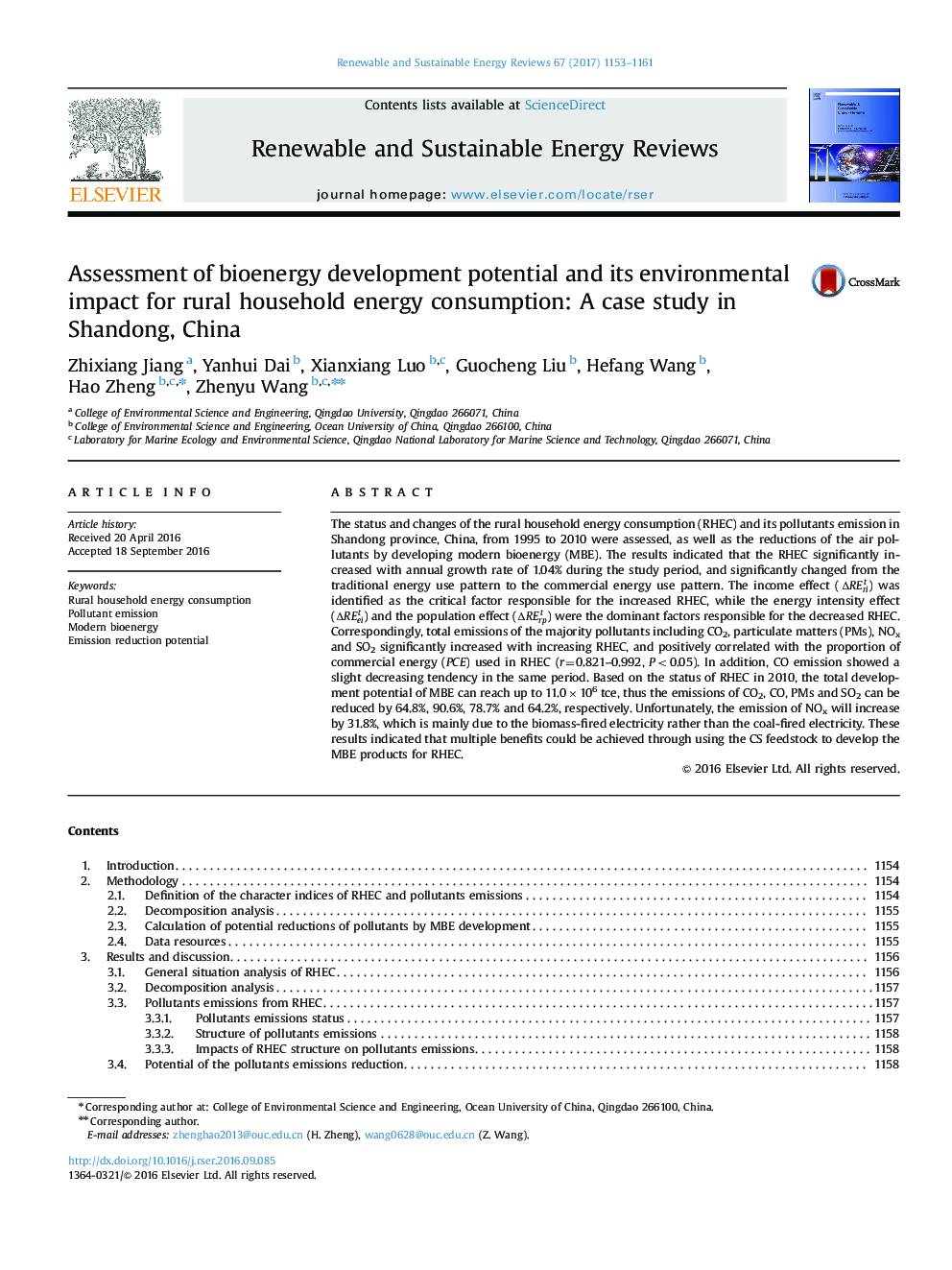| Article ID | Journal | Published Year | Pages | File Type |
|---|---|---|---|---|
| 5482794 | Renewable and Sustainable Energy Reviews | 2017 | 9 Pages |
Abstract
The status and changes of the rural household energy consumption (RHEC) and its pollutants emission in Shandong province, China, from 1995 to 2010 were assessed, as well as the reductions of the air pollutants by developing modern bioenergy (MBE). The results indicated that the RHEC significantly increased with annual growth rate of 1.04% during the study period, and significantly changed from the traditional energy use pattern to the commercial energy use pattern. The income effect (âRErit) was identified as the critical factor responsible for the increased RHEC, while the energy intensity effect (âREeit) and the population effect (âRErpt) were the dominant factors responsible for the decreased RHEC. Correspondingly, total emissions of the majority pollutants including CO2, particulate matters (PMs), NOx and SO2 significantly increased with increasing RHEC, and positively correlated with the proportion of commercial energy (PCE) used in RHEC (r=0.821-0.992, P<0.05). In addition, CO emission showed a slight decreasing tendency in the same period. Based on the status of RHEC in 2010, the total development potential of MBE can reach up to 11.0Ã106Â tce, thus the emissions of CO2, CO, PMs and SO2 can be reduced by 64.8%, 90.6%, 78.7% and 64.2%, respectively. Unfortunately, the emission of NOx will increase by 31.8%, which is mainly due to the biomass-fired electricity rather than the coal-fired electricity. These results indicated that multiple benefits could be achieved through using the CS feedstock to develop the MBE products for RHEC.
Related Topics
Physical Sciences and Engineering
Energy
Renewable Energy, Sustainability and the Environment
Authors
Zhixiang Jiang, Yanhui Dai, Xianxiang Luo, Guocheng Liu, Hefang Wang, Hao Zheng, Zhenyu Wang,
